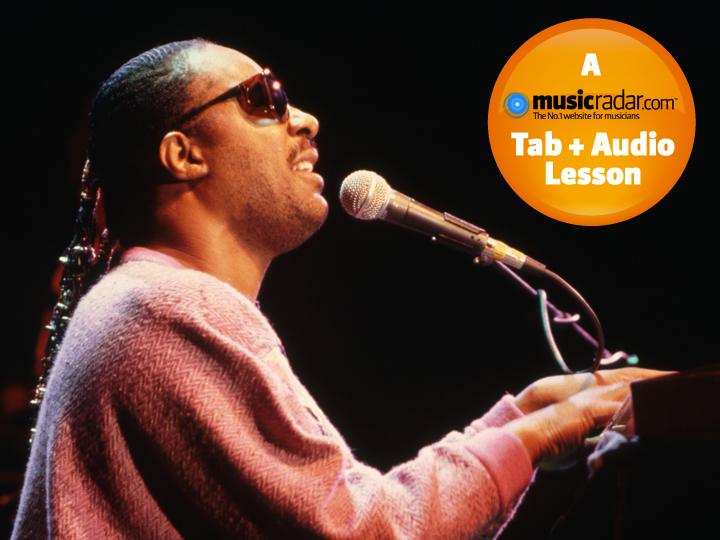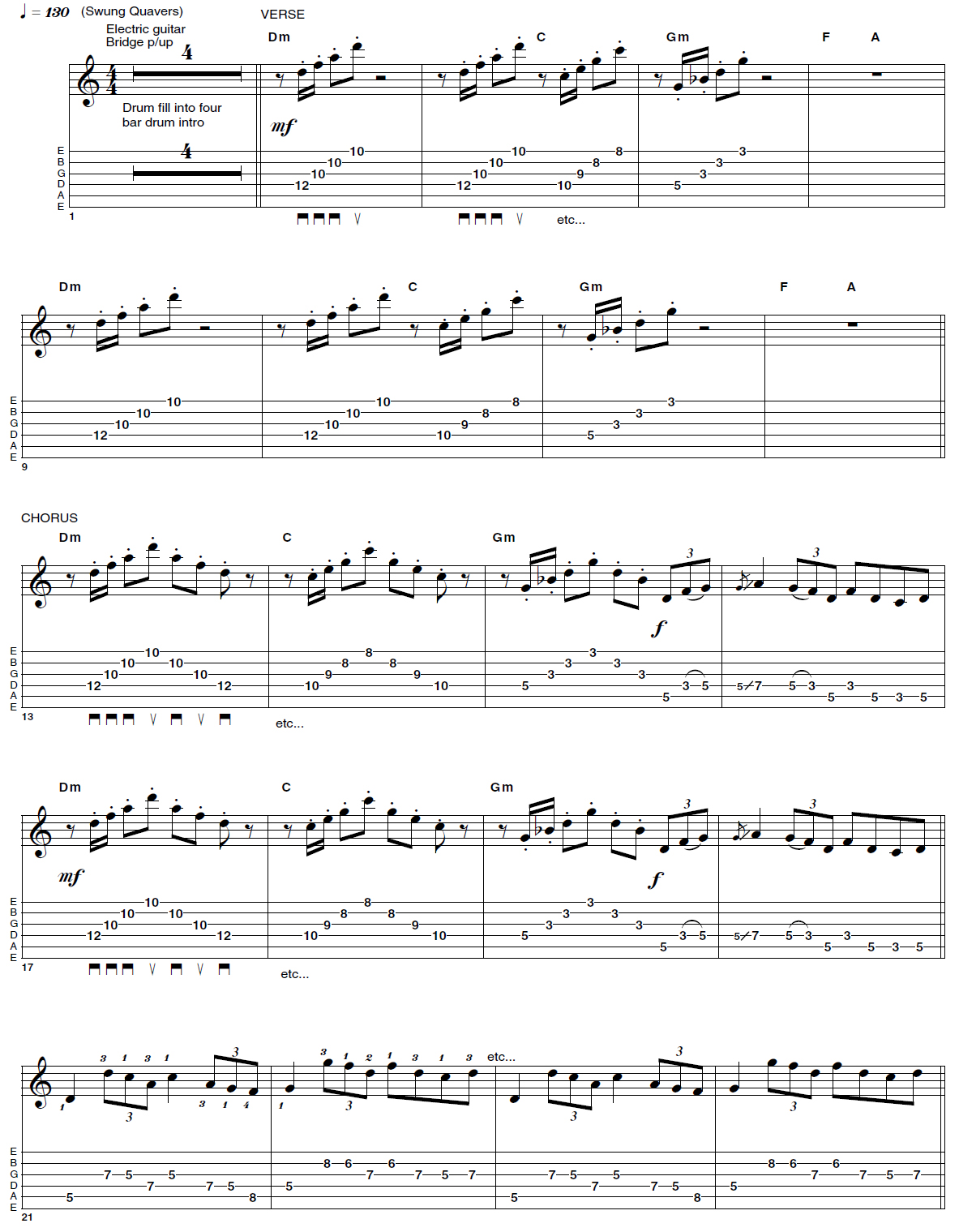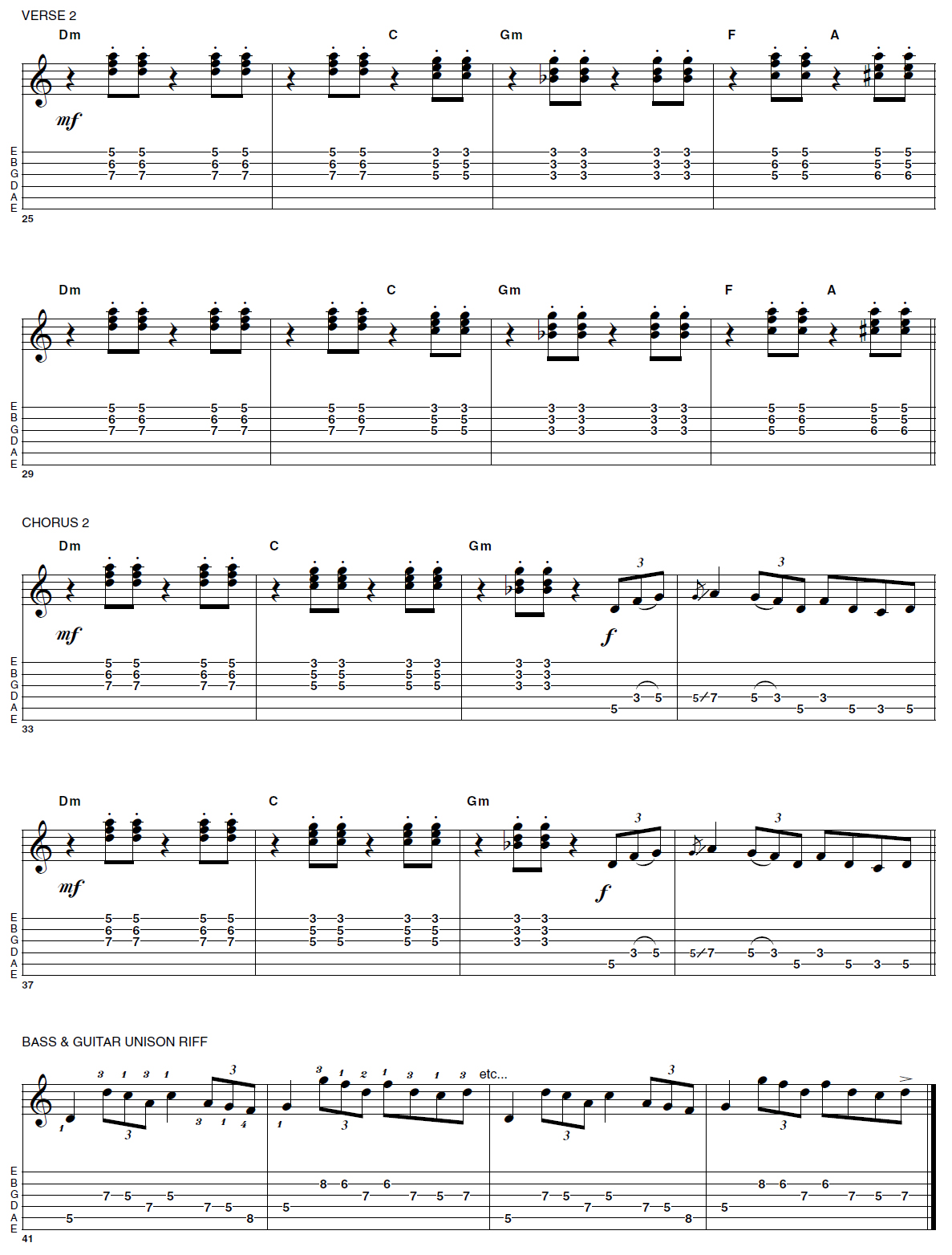How to play reggae guitar like... Stevie Wonder

In this lesson, we're going to look at how the reggae style has influenced mainstream pop artists. The Clash and The Police fused punk and reggae together with much success back in the late 1970s and early 1980s, while multi-platinum selling artist Stevie Wonder recorded several songs with a distinct reggae vibe.
Here, we're going to study Stevie's take on the reggae style. Stevland Morris first shot to fame as 'Little Stevie Wonder', a junior member of the renowned Motown stable of artists.
In his early 20s he began an illustrious solo career, racking up a string of classic albums in the 1970s and 1980s. Tracks like Sir Duke, Boogie On Reggae Woman and Master Blaster all have distinct reggae grooves and are ridiculously infectious songs.
If you listen to this month's track you will notice that the main 'skank' on beats 2 and 4 is followed by an upstroke. This gives a driving and insistent rhythm guitar part that is complimented by a 'Steppers' style drum groove. The skank guitar is doubled by a clavinet, a keyboard that Wonder is very fond of (think of Superstition).
The second guitar plays a quirky raked arpeggio part against the skank, which is very effective if played correctly. Those of you who have experimented with sweep picking will notice that raking is very similar, but if you want to use this technique in the reggae style you should combine it with a palm mute to get a percussive and staccato quality to each of the arpeggio notes.
To play the fast arpeggios in the first part of our track, you will need to develop your ability to sweep the pick across a chord shape. If you use a light palm mute, it will help with note separation, and it is important to get this mini sweep or rake in time with the backing track.
The best way to practise your timing is with a metronome; place the pick over the fourth string and sweep it down to the second string to produce a three-note rake. Aim for the last note of the three to land on the beat, and repeat the movement over and over again until it is smooth and in time.
Get the MusicRadar Newsletter
Want all the hottest music and gear news, reviews, deals, features and more, direct to your inbox? Sign up here.
The final part of the process is to place an upstroke on the first string at the end of the sweep. Once you are getting consistent results with a single chord, practise using the same process with the other chords.
The other element that Stevie likes to include in his arrangements is the unison lead line section. In these unison sections all of the melody instruments play the melody. Our track features lines created from D minor pentatonic. These sections are fun to play and exciting to listen to.
The transcription includes the fingerings for the skank chords and the rake technique, and these parts have been removed from the backing track so you can play along. Thanks to Darren Williams, Curtis Ruiz and Charlie Rinks for help with recording.
Audio
Full track
Backing track
Next page: audio examples tabbed
Example: Stevie Wonder-style reggae

[Intro - Bars 1-4] The drums play an unaccompanied four-bar intro.
[Verse - Bars 5-12] This is the rake arpeggio part. Palm-mute the strings then sweep the pick downwards across the strings to get a quick arpeggio. You can then finish the movement off with an upstroke on the first string. The picking pattern is the same for all of the chords, so if you spend some time getting the first one right the rest should slot into place.
[Chorus - Bars 13-17] In this section the rake arpeggios are embellished by playing back up the shape in a swung quaver rhythm. There is also a pentatonic melody to play at the end of each four-bar section. Make sure you include the slides and articulations for an authentic feel.
[Unison Riff - Bars 21-24] This pentatonic riff has some tricky transitions, so the tab has some suggested fingerings to make life easier. All the notes are picked, so start slowly and work up to tempo.
Next page: audio continued
Example: Stevie Wonder-style reggae… continued

[Verse 2 - Bars 25-32] In the skank section, play the chords staccato by lifting the pressure off your fretting hand as you hit the strings with the pick. In true reggae fashion the chords are fretted on the top three strings and played with a downstroke followed quickly by an upstroke.
[Chorus 2 - Bars 33-40] The skank rhythm playing gives way to the unison melody every four bars. The melody is the same as in Chorus 1.
[Unison Riff - Bars 41-44] A repeat of the first riff. If you think this is easy, record yourself and see if your rhythmic subdivisions 'groove' well!









